Terp Hopping
Daniel Holler, Shao-Chun Hsu, Tony Li
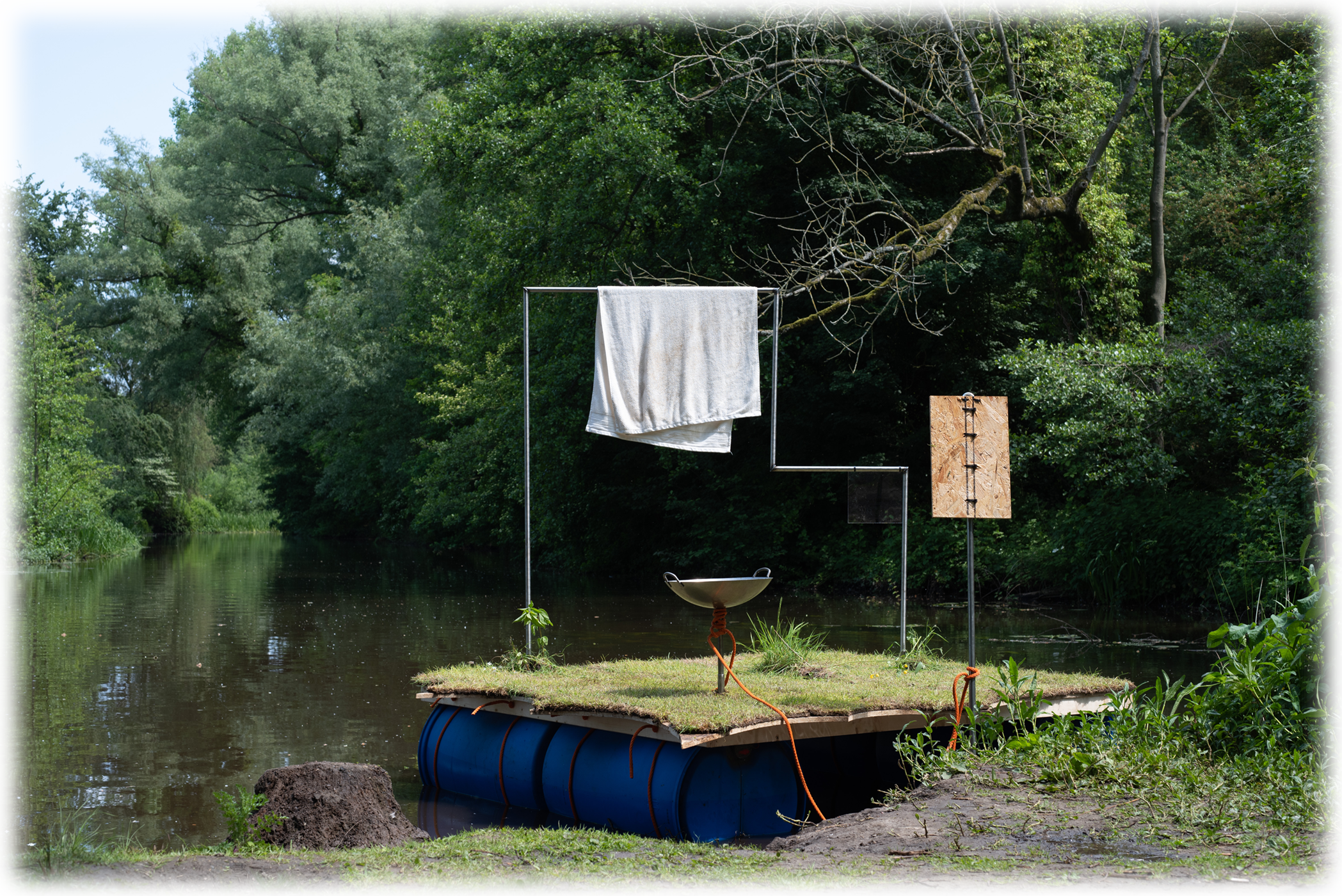
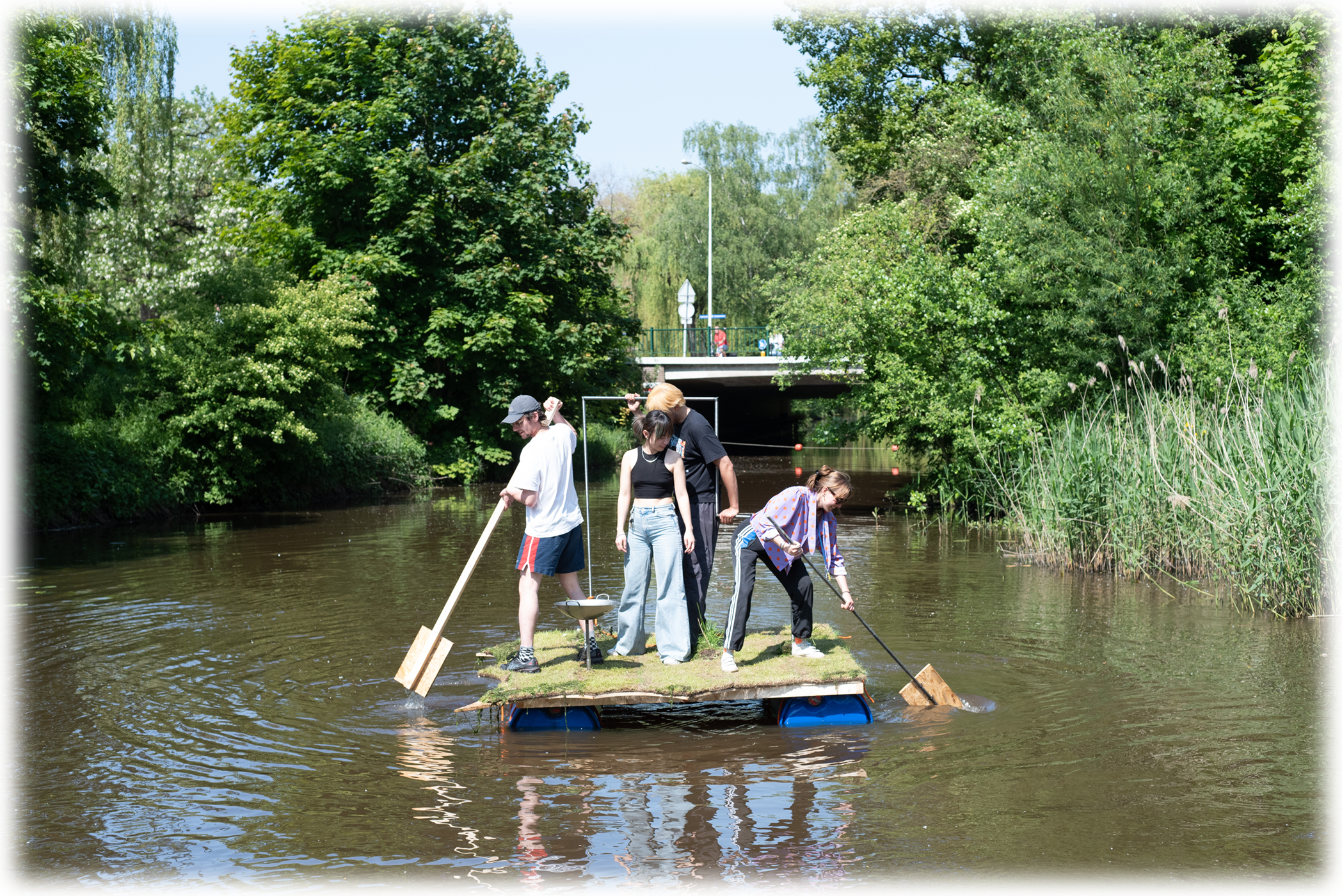
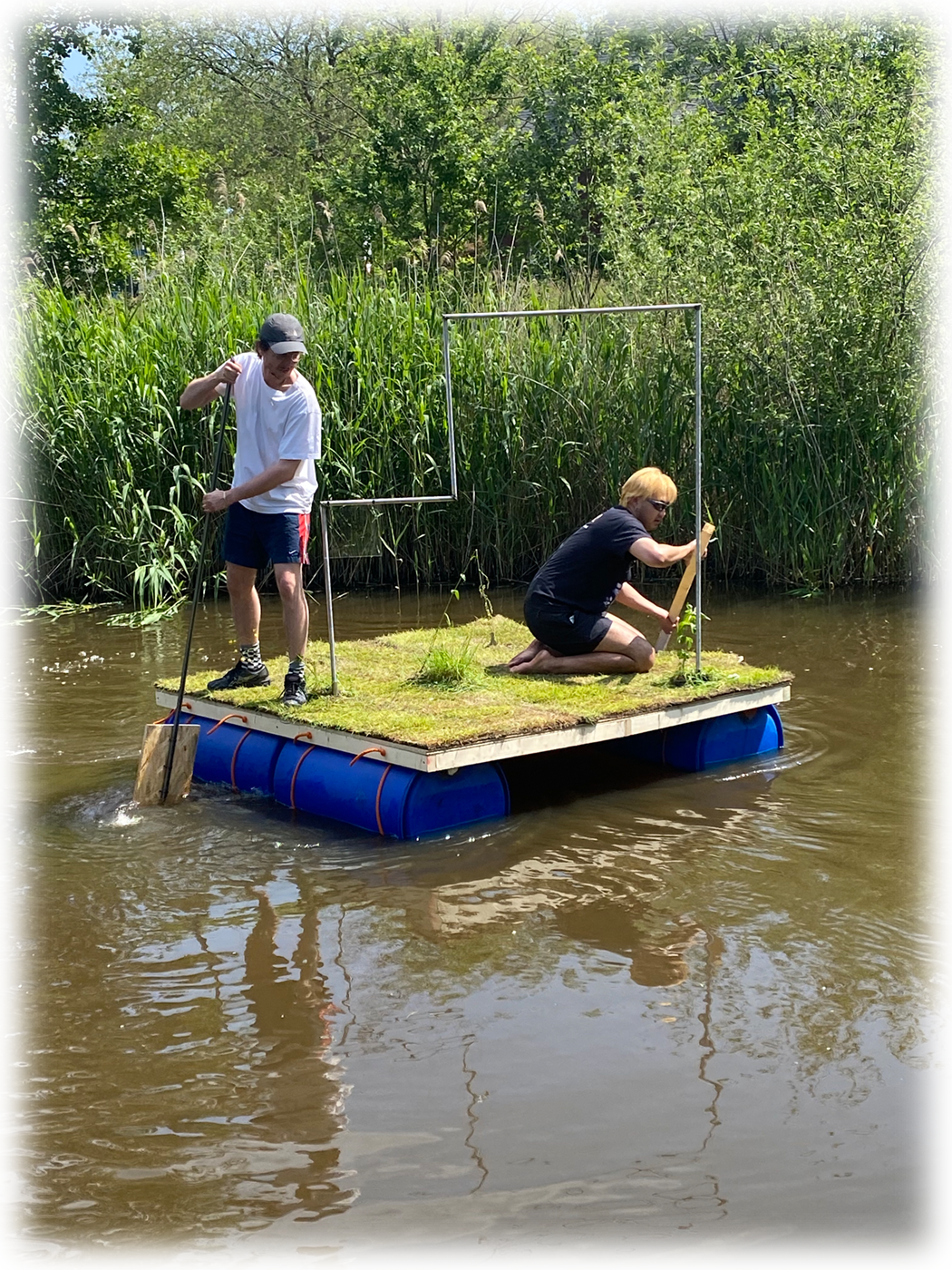
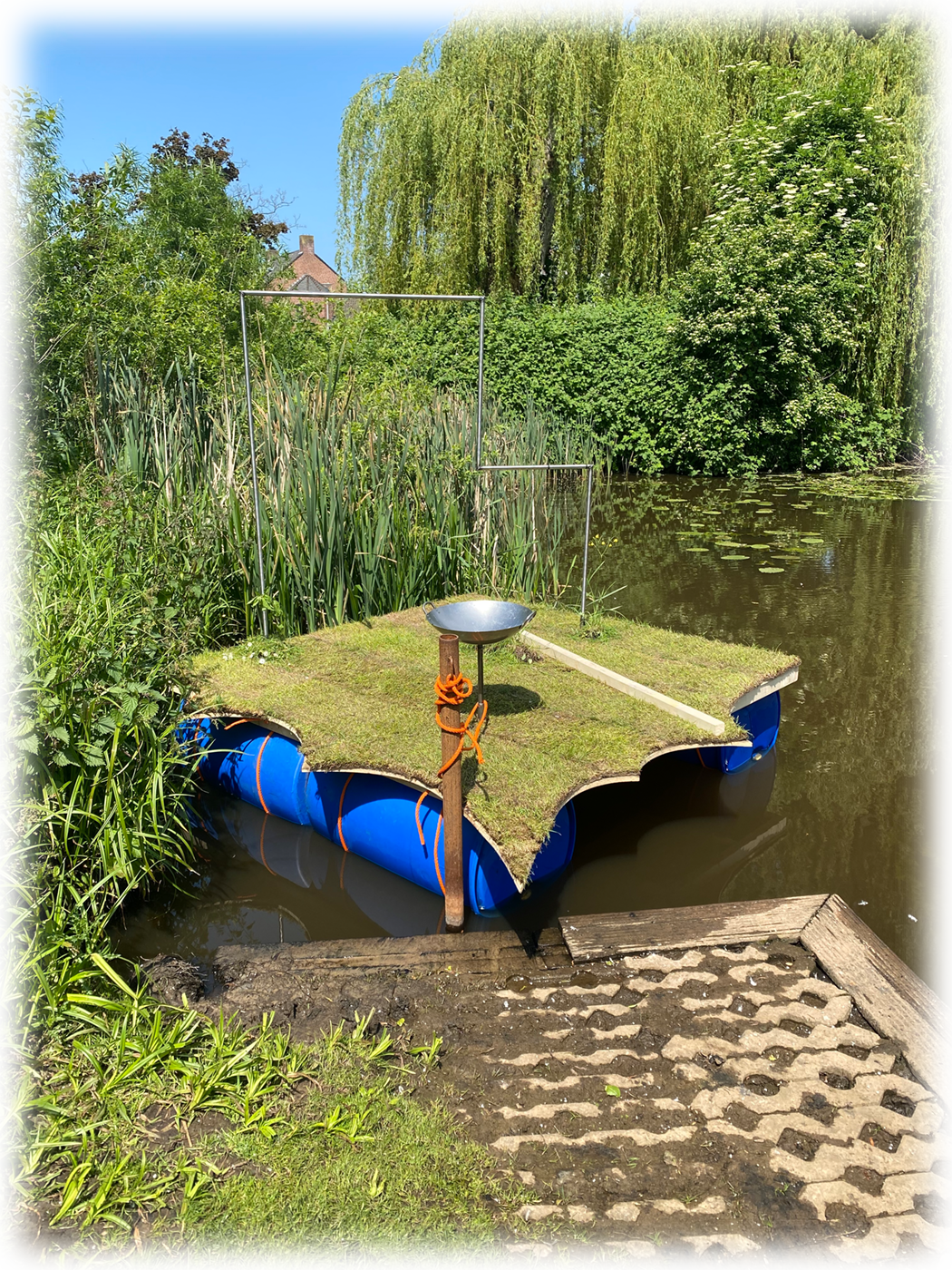
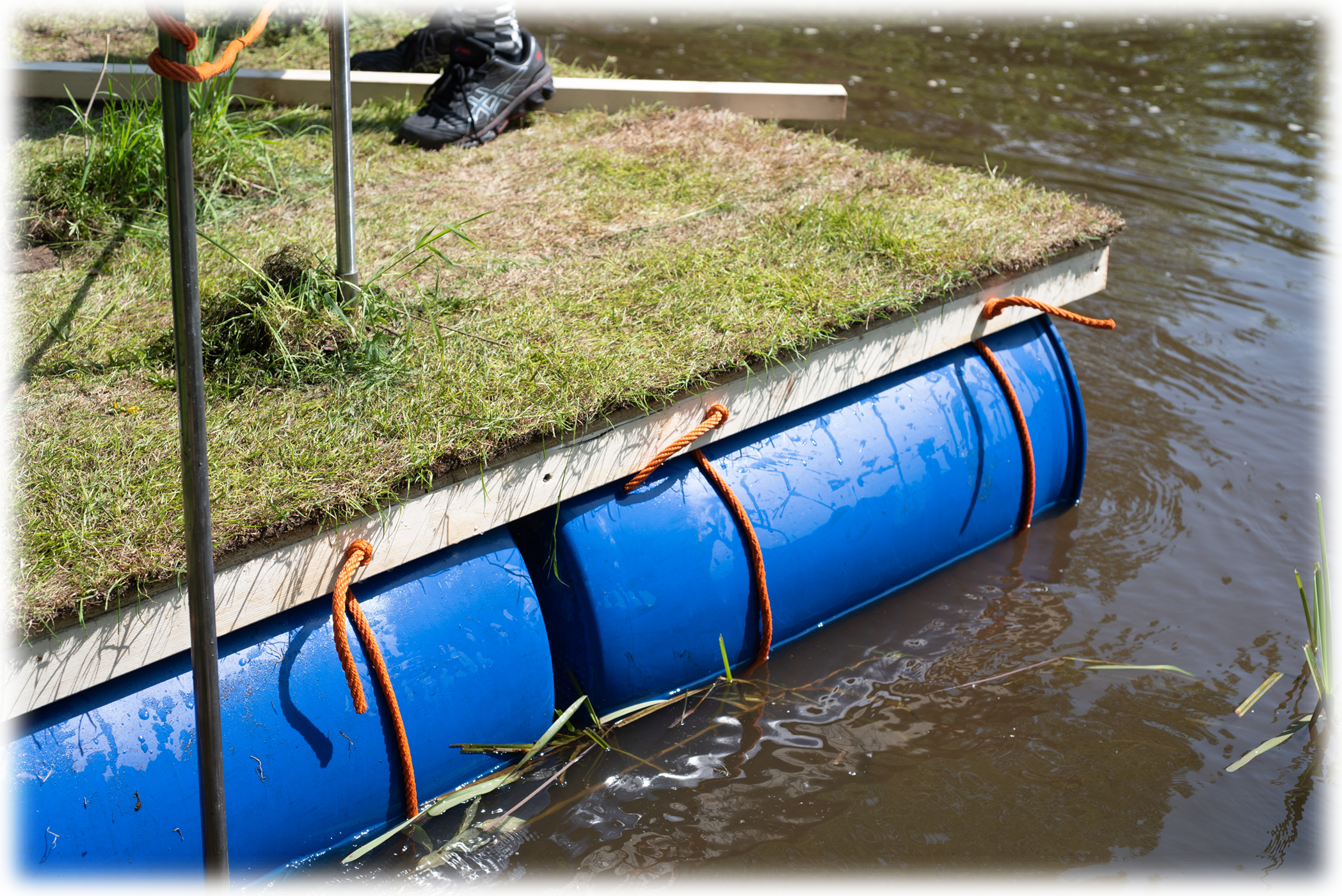
The Netherlands is home to an extensive system of waterways which is unparalleled in Europe. Connecting major cities and the country’s interior with the sea, one could say that Dutch waterways make up their own network of streets. With rising water levels, countless coastal locations will have to deal with a complicated new reality. Here, in the Netherlands, rising sea levels are countered with state-of-the-art engineering, given the country’s long tradition of building dams.
We think we need to start negotiating with nature instead of against it – how would life look if we lived and travelled on water?
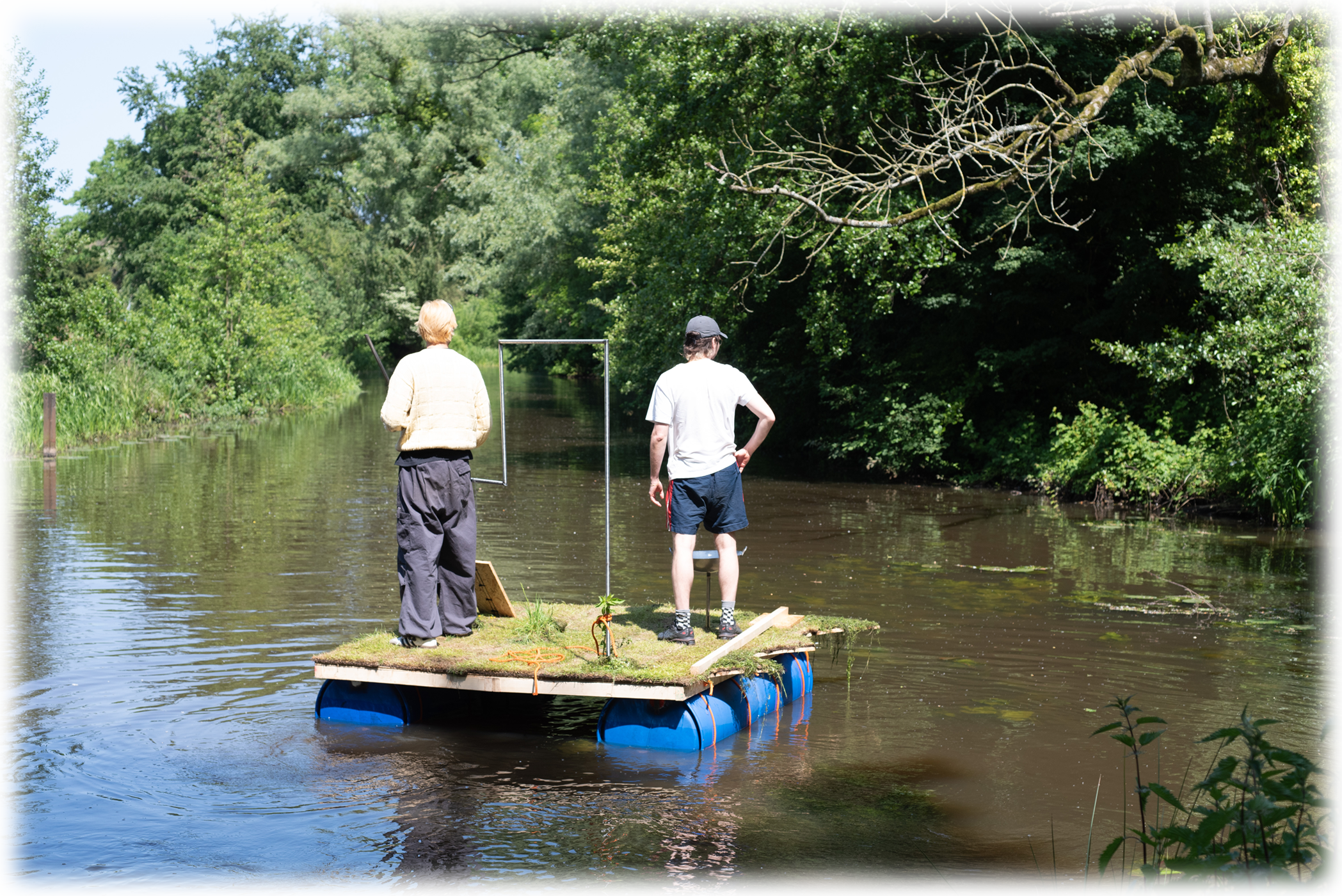

To explore this question, we created a common space on Dutch waterways. Drawing inspiration from pre-dyke Netherlands, where people built terps (artificial mounds that offered protection from floods), and translated this feature into a raft. Our floating terp, called Hitch 1, is a collectively owned island. Anyone can use it to move from point A to point B, to hang out, cook, connect, hitchhike through the country, or reach unreachable places – at no cost other than being responsible for the boat’s wellbeing.

The raft is managed through a Telegram group and depends on the group’s efforts to stay in shape and, most importantly, to share its location for the next user. When stumbling upon the raft in the wild, one can easily join the group by scanning a QR code. The grass that covers the surface of the raft allows it to camouflage and melt seamlessly into the Dutch landscape. It’s also equipped with railing to hint at the handrails found on public transport, emphasising the users short, and potentially routine, stays on the boat. Additionally, Hitch 1 has a modular metal pole system that can house a variety of tools, encouraging users to upgrade and extend the raft at will.